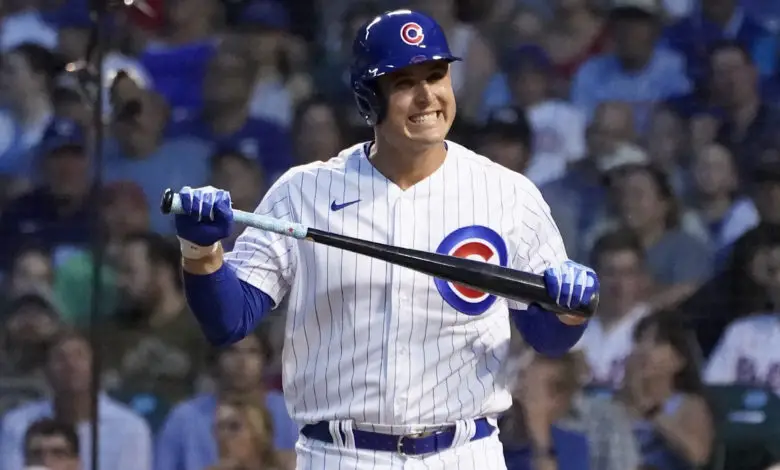
Jed Hoyer Wants to Avoid ‘Rebuild’ Label Even Though Actions May Say Otherwise
Does anyone else find it funny that The Athletic cited sources to report that the Cubs are “beginning the process of becoming sellers” when Jed Hoyer flat-out said as much on Thursday? Hell, they’ve already begun the process of becoming the cellar with an 11-game losing streak that’s part of dropping 18 of their last 23 games. With virtually no chance of making the playoffs and a huge chunk of the roster uncommitted after this season, big names are going to be traded.
“You have to keep one eye on the future and what moves you can potentially make that can help build the next great Cubs team,” Hoyer said. “You have to think through those things. It would be irresponsible not to take those phone calls.”
The big issue here is that teams are increasingly unwilling to part with premium prospects in exchange for a player who will only be with them for two months or so. Unless said player is the surefire missing piece to a World Series title, if such a player even exists, the return just isn’t going to be great.
That means the Cubs are going to have to employ a volume approach that could see them moving multiple players in order to get as many prospect lottery tickets as possible. Think of it like putting more money into the 50/50 raffle in order to reduce the per-ticket cost.
There’s also the possibility of paying down larger portions of players’ remaining salaries for 2021 in order to increase the return. With the Cubs well under the competitive balance tax threshold for this season and projected for an absurdly low $59 million CBT obligation for next year, it would be unconscionably negligent to decrease their trade leverage just to save a few million bucks.
Then again, we’ve seen over the past few years how reduced baseball budgets have hamstrung baseball operations each winter. But the potential to spend a large portion of the $114 million set to fall off the books after this season could lend credence to Hoyer’s claims that what’s coming won’t resemble the efforts he and Theo Epstein undertook when they first came to town.
“We’re in a different situation now than we were in 2012,” Hoyer said. “The decisions we’re making, the processes we’re going through are completely different. That label is certainly something to be avoided. I think that people talk ‘rebuilds’ when you’re doing what we did in 2012. We are going to have roster turnover. We need to do that. That was inevitable.
“This is certainly not a rebuild by any kind of definition that we’re using from our past.”
I mean, that’s cool and all, but the only way this isn’t a rebuild is if significant money is spent on either extensions for some core players or in free agency. Even if you’re one of those dreamers who believes the Cubs can trade some of those players away and then still re-sign them in free agency, you have to admit the chances are slim. That means getting splashier in the market than they’ve been in several years.
The Cubs spent big on pitching prior to the 2018 season, notably for Yu Darvish and Tyler Chatwood, but they’ve largely avoided any significant deals for position players since signing Jason Heyward ahead of their title run. While Hoyer will certainly have a little freedom to add players, something he’ll have to do out of necessity given the mass exodus, it’s doubtful we’ll see anything landscape-changing this winter.
One complicating factor is the status of the collective bargaining agreement, which will need to be renegotiated before teams start inking new deals for free agents. Then there’s the question of whether or not ownership really wants to spend. If the real value of owning a team is derived from tax breaks and asset appreciation, there’s little impetus for Tom Ricketts to press fast-forward on a new competitive window.
I’m clearly skeptical of this whole thing and I believe, to borrow from football parlance, the Cubs are going to punt in the hopes of eventually winning the field position game. So while I sincerely hope they’ve got a trick play up their sleeve, preferably not one designed by Matt Nagy, it sure feels like we’re in for a slog over the next season and a half at the very least.
Just keep the hot sauce ready because I’ll gladly eat my words when the time comes.
